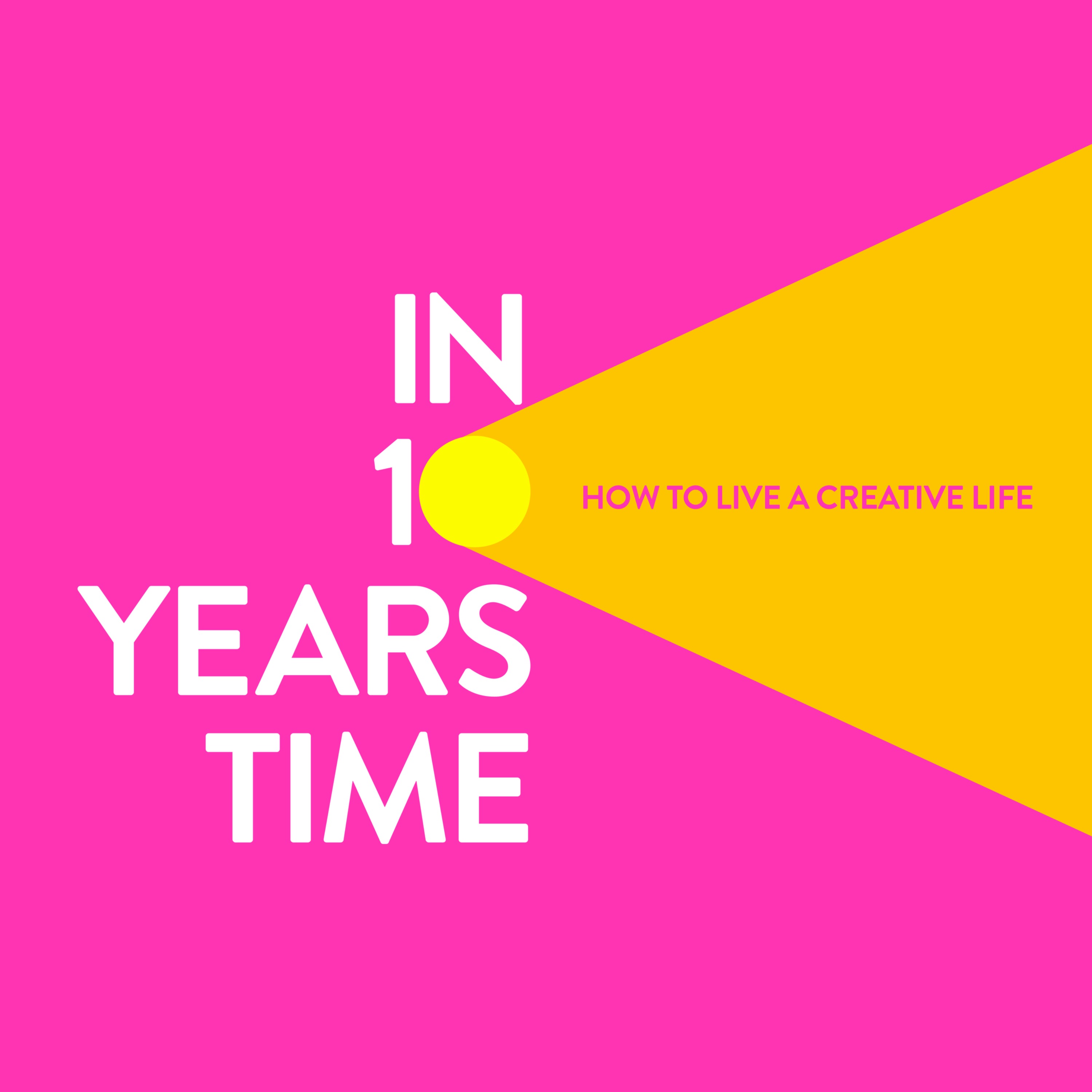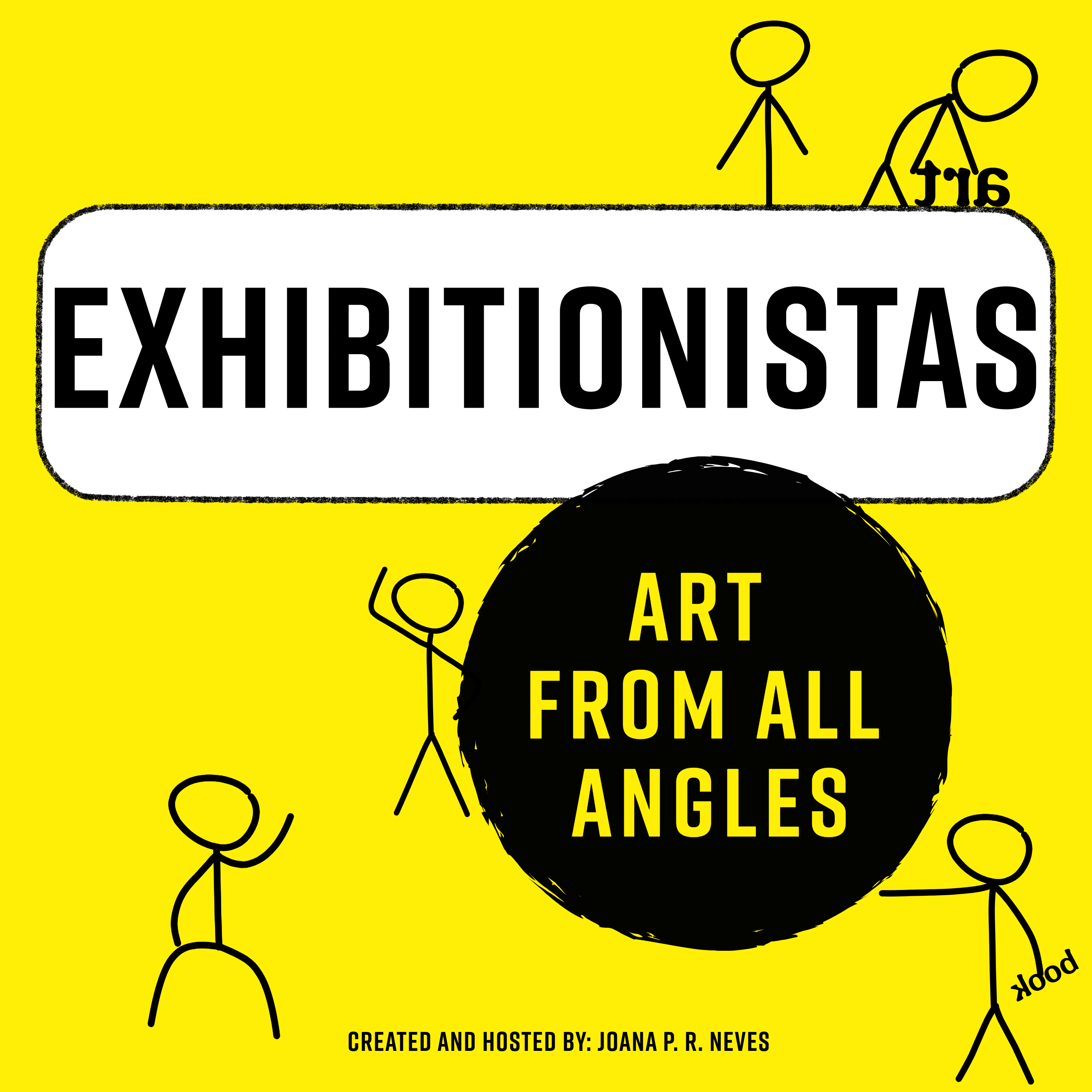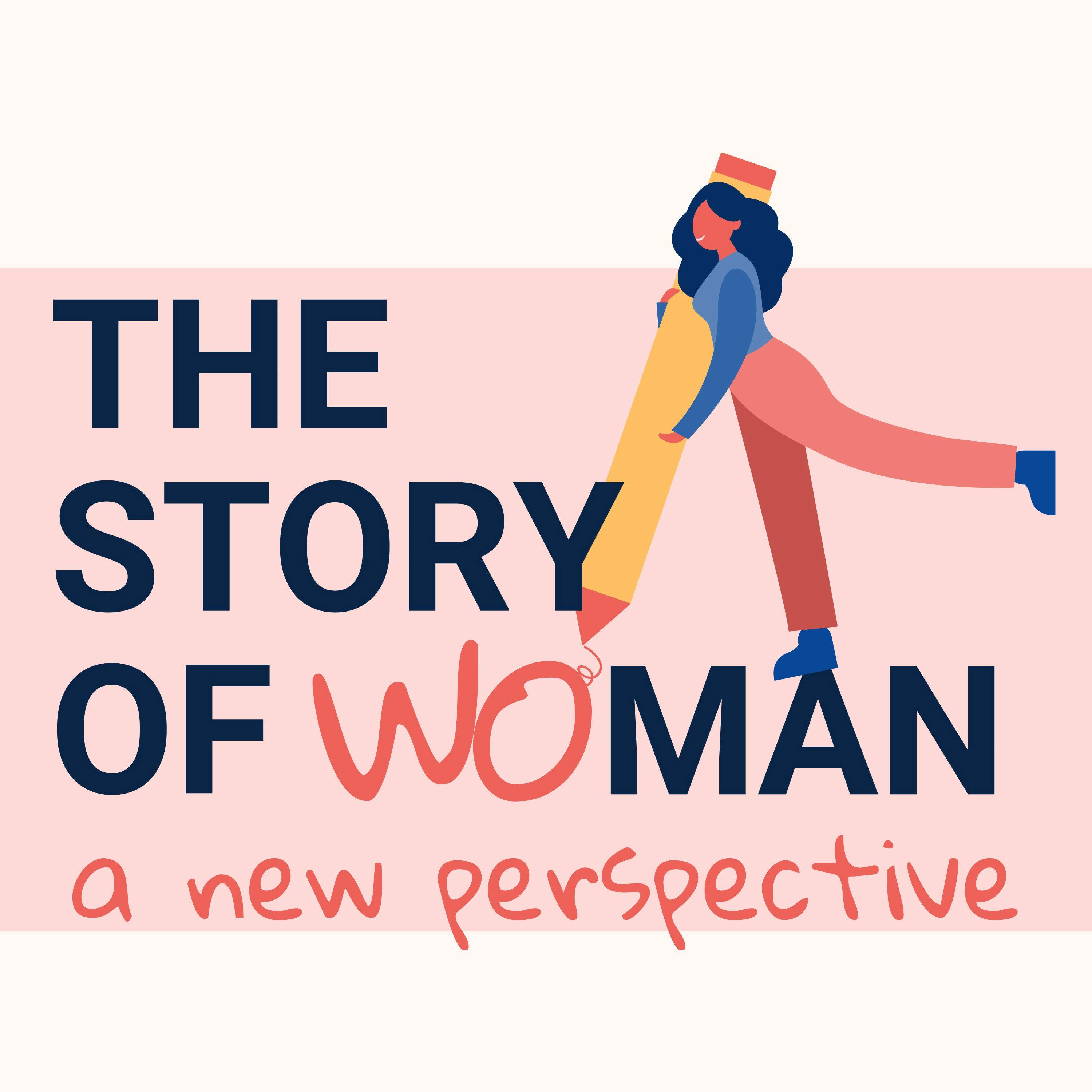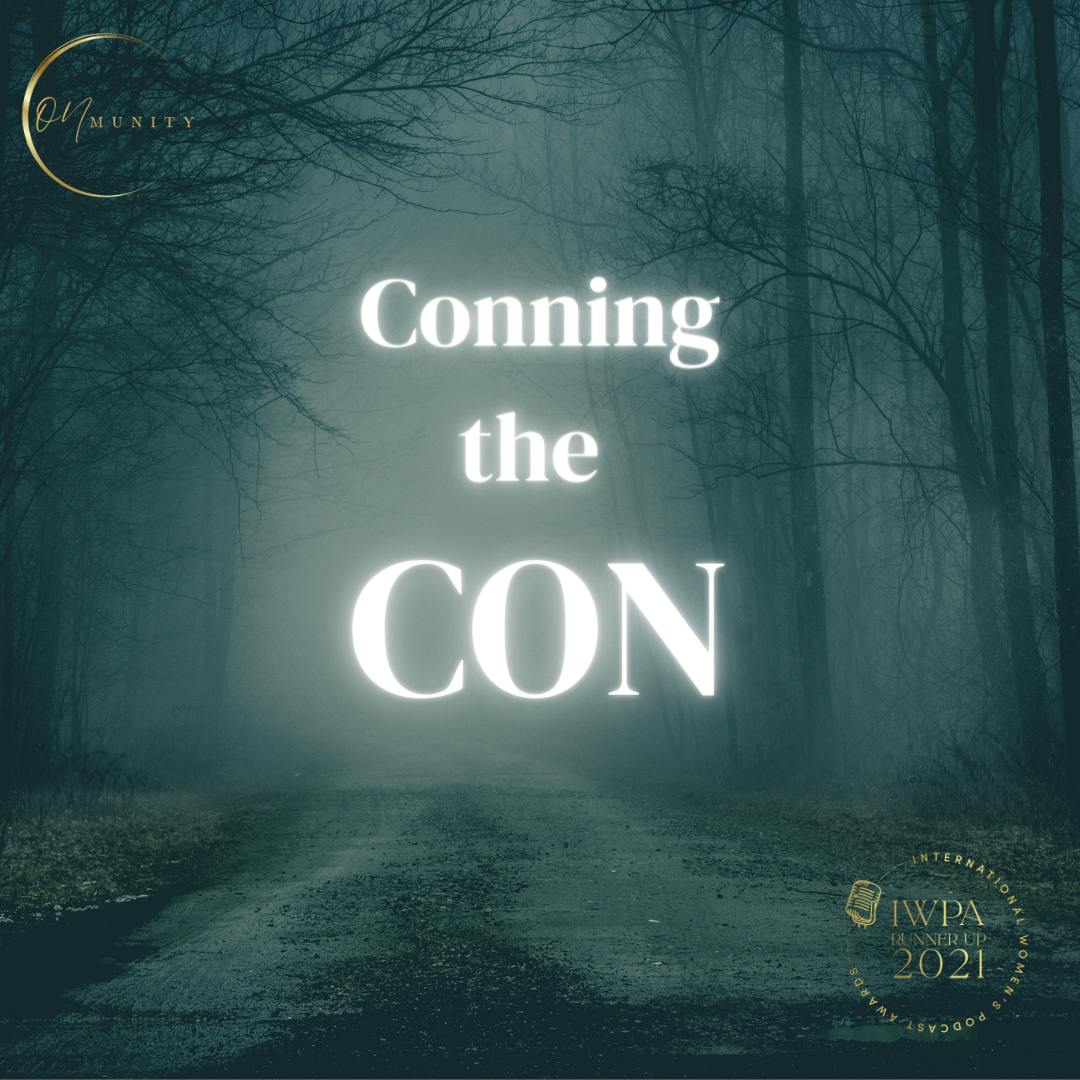
Creativity Found: Finding Creativity Later in Life
Real-life stories of finding or returning to creativity in adulthood.
I'm Claire, and I re-found my creativity after a time of almost crippling anxiety. Now I share the stories of other people who have found or re-found their creativity as adults, and hopefully inspire many more grown-ups to get creative.
I chat with my guests about their childhood experiences of creativity and the arts, how they came to the creative practices they now love, the barriers they had to overcome to start their creative re-awakening, and how what they do now benefits their physical, mental and emotional wellbeing.
Want to be a guest on Creativity Found? Send me a message on PodMatch, here
Creativity Found: Finding Creativity Later in Life
Adriana Saldivar – beauty in urban decay
Adriana is a healthcare worker who finds her escape and creativity through urbex photography.
When her son became more independent as he grew older, and after a bad day at work, Adriana bought a camera and hit the road. She explores abandoned buildings and takes atmospheric photos of places most people will never see.
If you found value in this episode and would like to show your appreciation, consider supporting the podcast through the Support the Show link, or by sending a boostagram , for example in the Fountain app.
CreativityFound.co.uk
Instagram: @creativityfoundpodcast
Facebook: @creativityfoundpodcast and Creativity Found group
YouTube @creativityfoundpodcast
Pinterest: @creativityfound
Twitter: @creativityfoun
Researched, edited and produced by Claire Waite Brown
Music: Day Trips by Ketsa Undercover / Ketsa Creative Commons License Free Music Archive - Ketsa - Day Trips
Artworks: Emily Portnoi emilyportnoi.co.uk
Photo: Ella Pallet
I would love some financial support to help me to keep making this podcast. Visit buymeacoffee.com/creativityfound
Want to be a guest on Creativity Found? Send me a message on PodMatch, here
Podcast recorded with Riverside and hosted by Buzzsprout
For this episode, I'm speaking with Adriana, who, after having a bad day at work, went out and bought a camera, the subject matter of her photography might surprise you. And her pursuit of that is a creative journey in itself. Hi, Adriana.
Unknown:Hello.
Claire Waite Brown:Hi that your newfound creativity revolves around something called urbex. What is urbex?
Unknown:Well, urbex is urban exploration. People explore abandoned buildings and take videos sometimes take photos. Some people go alone, but it's not recommended. And you know, most people explore with other explorations explorers.
Claire Waite Brown:Fascinating. Let's go back a bit. Did the arts have an impact on your life when you were growing up?
Unknown:Yes, I feel that, you know, I've always been more of a creative person, I used to write poetry. I did a lot of sketching when I was younger. I love music. And you know, I've just always been interested in different types of art. I don't ever study anybody else's art. I've just tried to be creative on my own. And I've always been interested in architecture, back as a child and, you know, grew up around really big structures, especially structures that were abandoned in town that, you know, just fascinated me. Yeah.
Claire Waite Brown:Once you left school, how did your life develop?
Unknown:Well, I had a child very young. And so I just, you know, learned how to, you know, take care of me and him. And so I started in the healthcare field. From there, I, you know, my creativity had kind of lagged a little bit, because I was just doing everyday day to day life, and just stopped exploring interest, just to keep up with, you know, day to day life.
Claire Waite Brown:Yeah, so, so then At what point did you were you able to, to change that? So at what point did you decide you would explore your interest in architecture further by purposefully going out to photograph abandoned buildings.
Unknown:When my son started getting older, I found that I could be more independent, you know, he had found his own interest. And I started to be able to explore my own interest. And I had, I was at my nine to five, and I was having a very bad day. And I just realised that I wasn't pursuing my passions. And I've always been interested in photography, but never, you know, never had the ability to pursue it. So that day changed a lot. I went out and got my very first camera and literally just started driving on the road and looking at places that I can photograph and I just fell in love with it.
Claire Waite Brown:Tell me about some of the things you see and you experience in the places that you visit.
Unknown:When I go to an abandoned building, especially when I'm alone, I feel very connected to the structures. And I mean, there's a sense of peace and calming, especially when you have no one around. You can feel like a connection I've explored You know, schools and walking down hallways, and imagining what it used to be life on, it had some so much life in it. And now it's just quiet and you can hear the echoes and it's, it's just beautiful. And then you can see also like the decay, and where things are falling apart and also with overgrowth weeds, and it's like nature's taking back, I've learned to explore and play around with my camera, and my low angles are one of the things that I feel that is different from others. I, I purposely love to take low angle shots, it's just you can see more of the decay. And I mean, sometimes it gets a little scary. So we take, you know, try to take somebody when I know might be dangerous, like climbing stairs on the silos where they're partially decayed and definitely don't want to fall through. But it's getting so much more thriving.
Claire Waite Brown:So do you sit? Do you meet other explorers? Sometimes when you're by chance? I mean, when you're out?
Unknown:Yes, I have met, I've ran into more explorers when we're out. It's kind of like an understanding. Sometimes we don't even need to speak you just put up a hand like, you know, to acknowledge you're both friendly. And then we just go on our business and on our way. Yeah.
Claire Waite Brown:You mentioned the schools. And generally I can imagine, you must get a feel for what happened in that building? Previously, do you kind of invent stories? Do you look into the history, the social aspect of those buildings?
Unknown:Yes, I have researched some of the buildings that I've been in. Sometimes it's hard to find history. Especially in a very small town that has a population of 200. It's hard to research history, but I have walked into buildings that I've researched and known when they were built and how long they were in service was the reason why they went abandoned. Have they tried to been restored, there is a baseball field that I've been to, and had been restored three times and still ended up becoming abandoned once again, due to financial issues, or just not enough. You know, enough people visiting stuff like that. But sometimes it's a little disheartening, especially when you know that it could thrive, or it's the built in the quality and the beauty of it. And it's just sitting there for nature to take back.
Claire Waite Brown:Yeah, I guess it could be quite sad. How do you find and gain access to the, to the abandoned buildings that you photograph?
Unknown:Honestly, since I wasn't really connected, when I first started exploring, driving around has really been the main my main resource. I've drove, you know, two to three hours just looking, driving through small towns and just, I mean, just exploring on my own. I've looked things up, because some places are more well known. But to be more, you know, Frank, it's just putting myself out there. And literally just driving and stopping. And I've talked to some locals as well, and I try to get feedback from them. But honestly, it's just on my own. Yeah.
Claire Waite Brown:Do you ever have problems accessing? Well, I
Unknown:definitely do not access a place I cannot walk into, or I don't break anything to enter. There's, you know, kind of a role and unset spoken rule about if you just can't access it, you don't you know, you don't take anything and you don't leave anything you just you know if you can get in, you just snap pictures, but you don't take anything and you don't break anything. I'm don't condone graffiti or anything like that. Sure.
Claire Waite Brown:What do you think you've learned about photography and composition from these explorations?
Unknown:Well, I definitely learned And manual shots are always better. Don't want to put on auto cuz the pictures may fall flat. I've learned rule of thirds and not to centre on a specific thing. And also, you know, I've seen a lot of my own growth just looking back from when I first started taking photos to now.
Claire Waite Brown:Yeah, so you haven't you've you've learned this all organically, you've kind of taught yourself you haven't gone off to photography courses?
Unknown:No, I haven't, I find that you can be more creative. If you just kind of pick things up on your own. I mean, I want to learn more structured things, but as of now, I literally just kind of teach myself on what angles are better. And you know, how colours may change things? And what way the sun may be pointing. All those played a factor into if a picture is gonna stand out, or if it's just gonna look like a picture.
Claire Waite Brown:Yeah, brilliant. That's the the technical side of things. What about the personal emotional side would have you have you noticed changes in yourself from the time of starting this creative exploration.
Unknown:I feel that it's changed my everyday life, I feel more fulfilled. It's, it's very different when you pursue something you're passionate about, as opposed to just something with an income. And you build a relationship with, you know, your passion and your subjects and it's just more, you know, I have more peace or more controlled, I'm more satisfied. I mean, I have more confidence. People ask me now to take portraits, and I'm more comfortable with that. Because they, they enjoy my photography, and they feel comfortable with me, taking photos of them and their families.
Claire Waite Brown:I love sharing my guests stories with you. But podcasting isn't cheap. There are hosting fees and software costs, tech to buy and time to invest in planning and editing. To make sure the guests sound great, and listeners hear the best content. If you'd like to financially support creativity found, please visit kayo hyphen, f ai.com slash creativity found podcast. Now back to Adriana, who's telling us about her portraits.
Unknown:I started off with like friends just asking me Oh, do you think you can do this? And now people will actually call to, to book me for events. I mean, I've I've taken photos of a birthday party for a dog as well. And that was pretty fun and interesting. I mean, especially when you get to get paid for what you enjoy doing.
Claire Waite Brown:Speaking of which, how does how does this fit in with your role still in the health care department still as a as a mother? How do you manage to be able to do both things?
Unknown:Well, I mean, it's just spare time, I literally any time I've had available on my own, sometimes my son has explored with me so we try to connect on that level as well. Finding interest in my interest he has now he appreciates it. And sometimes he comes along on road trips. I started just having any time on my own, I would look more either on developing my skill or finding a location. It has been you know, it started off as a small hobby hobby and now it's kind of turning into a bit of a career. And you know, so it's, it's just finding the time. Yeah.
Claire Waite Brown:Adriana, tell me about some of your most interesting or most exciting or the favourite buildings that you have visited and a bit about why you liked them so much.
Unknown:When I first started exploring, one of the places I've gained access to was a grain silo. And the reason why I find it probably one of my favourite locations, is because I have a death, fear of heights, and I was able to overcome that to be able to see a view that probably no one has seen before or few who have ventured off. It has been like one of my greatest experience because when you're so high up above the ground, there is a bit of the fear, but also too, it was just quiet and beautiful. Walking through, you can hear echoes of broken glass. I mean, that one has probably been my favourite exploration even though it was early on. But I've also explored this one building that hot was halfway collapse. And I walked into a room that kind of looked like it had chains coming down from the ceiling, and it had an exam table for and that one was kind of creepy, but it was one of my favourite explorations as well, kind of because the creepy factor, but the access was so easy. I literally walked into the building, and that room was on the left. And I mean, you can see the sun shining through cuz it was halfway collapse, but it was still very beautiful. Yeah. Brilliant. Thank you.
Claire Waite Brown:You started a Facebook group that now has more than 13,000 members. Tell me about Tell me more about that group. And what happens there.
Unknown:When I first started this group, it was because of the passion of abandons, and I have been in a few groups on Facebook, it is called Texas forgotten and abandoned. I started it just because I wanted a little outlet of my own, and to grow the community. But I never imagined that I would get the traction I did, somebody joined and after that, within weeks, I was getting, you know, 20, then 50 request, and then all of a sudden it started becoming like, almost daily that I would get, you know, around 50 request, and now it's grown to where it is. And people interact. And we all share our photos and give each other encouragement and you know, just try and you know, grow the group as a community. And it's Texas specifically. But I do let people post out of Texas on Saturdays
Claire Waite Brown:like that on Saturdays. So people, like people are sharing their histories or their you're asking questions about things they've seen.
Unknown:Yes. So you know, people ask questions about what have you encountered. people relate to other people, if they've explored the same structures, we try not to give out too much locations just because of vandalism and, and things like that. But so we try to keep the details. minimise. But we definitely share on that aspect, especially if we viewed the same thing. Others have you? Yeah, it's just a different perspective. And everyone's perspective is different in everyone's photos are different. So it's, it's kind of exciting to see another person's point of view, if you've been in that structure. And you just never even seen that area or that angle. I mean, people's, you know, individuals perspectives are, are quite interesting. Yeah. Speaking of which you've mentioned to me before that you, you do also take time to look at the spaces without the camera or rather, not from behind the lens. Does that give you a different outlook? Yes. So I try to take in moments as well, because I don't want to just look at the photos, I want to remember the structures without the lens, and just have a personal memory. And so sometimes I have walked through and take either minimal pictures, or just stop to absorb the atmosphere. And just a different perspective as well. besides just the photos, it sounds like
Claire Waite Brown:quite a mindful thing to do to actually stop and look.
Unknown:Oh, yeah, definitely. It's, again, like we venture out into places that people don't normally get to. So that's what the photos are so people could see. But also to is just, I mean, it's a different perspective, and to absorb the atmosphere of what once was or what its current state is and just to, you know, take the time to see things that you know that that's the whole point of the visit itself, not just to show other people But because you want to, you want to see and explore and have this vision, and that others just don't have the opportunity. So, I mean, it's not just about the photos or telling its story. It's learning it on your own.
Claire Waite Brown:Yeah, it sounds amazing. You are based in Texas. Have you travelled further afield? Do you hope to travel further afield?
Unknown:I do want to travel, I kind of want to travel across the nation, here in America, but after you know, I conquer what I feel is fit, then I want to explore outside of the country and visit you know, other monuments or, you know, explorations or structures, not just pertaining to Texas or America. I do like other countries, because the vandalism changes. Here in Texas specifically, sometimes it's just not as respectful as other countries are to their abandoned buildings. So we get a lot of graffiti and broken glass is another main thing, any glass that is, is in these structures are usually broken. But I've seen in other explorers, videos and pictures, you know, untouched structures that don't have any of that type of vandalism towards them. And I would really like to explore something like that.
Claire Waite Brown:Wow. Yeah. So travel for the future would be an ideal, what are the plans or goals do you have for the future,
Unknown:I really would like to create a book with my photos in it that may be like in a coffee house, accessed. So people could read maybe a magazine. I also want to put my photos up for purchase, and do like posters. I'm not really wanting to pursue my career, my current career. I would like to more pursue photography and be able to make a passion, a career as well.
Claire Waite Brown:A book I think would be wonderful, I could see that would be something that I would want to just dip into. There are many, many podcasts out there, it's difficult to know where to start. So I like to ask my guests for their recommendations. You're welcome.
Unknown:So podcasts I like and that I would recommend is called let's not me, I like it because it kind of gives you people's perspectives of encounters that either Creep them out, or these are usually based on personal experiences. So they're usually true stories about an encounter or a possible encounter that may have been something that is not expected or could have been dangerous. But yeah, it keeps me on my toes. Definitely, especially when exploring it gives you some ideas of what things may that can happen that you just don't. That is unexpected.
Claire Waite Brown:Ah, sounds really interesting. How can people connect with you?
Unknown:urban exploration oh seven is both my Facebook and Instagram. I also have a website as well and my website is in explorer I in XP, l o r.wordpress.com. You can contact me personally there or on my Facebook or Instagram and I do respond pretty quickly. I am able to be booked as well for portraits. If you contacted me on any of those social medias, I can definitely work out a time.
Claire Waite Brown:It's been fascinating. Thank you ever so much.
Unknown:Thank you. I definitely appreciate you having me on.
Claire Waite Brown:Creativity found is an open stage arts production. If you're listening on Apple podcasts, please feel free to subscribe, rate and review. If you'd like to help fund future episodes, you can buy us a coffee. That's Cato. hyphen F is the online platform that helps creators with financial support from fans of their work, visit kayo hyphen f fi.com. Slash creativity found podcasts. If you have found your creativity as an adult, and would like to talk to me for future episodes, drop me a line at Claire at openstage arts.co.uk on Instagram or Facebook follow at creativity found podcast where you will find photos of our contributors, artworks and be kept abreast of everything. We're up to
Podcasts we love
Check out these other fine podcasts recommended by us, not an algorithm.

Multispective
Jennica Sadhwani
Podcasting 2.0 in Practice
Claire Waite Brown
The Adult Ballet Studio
Elizabeth Blosfield
The Late Bloomer Actor
David John Clark
In Ten Years Time
Tricia Duffy
Exhibitionistas │Art & Culture From All Angles
Joana P. R. Neves, Curator
More Than Work
Rabiah Coon
The Story of Woman
Anna Stoecklein
Dreamful Bedtime Stories
Jordan Blair
Conning the Con
Evergreen Podcasts & Sarah Ferris Media
Watching Two Detectives
Evergreen Podcasts & Sarah Ferris Media
Podnews Weekly Review
James Cridland and Sam Sethi
